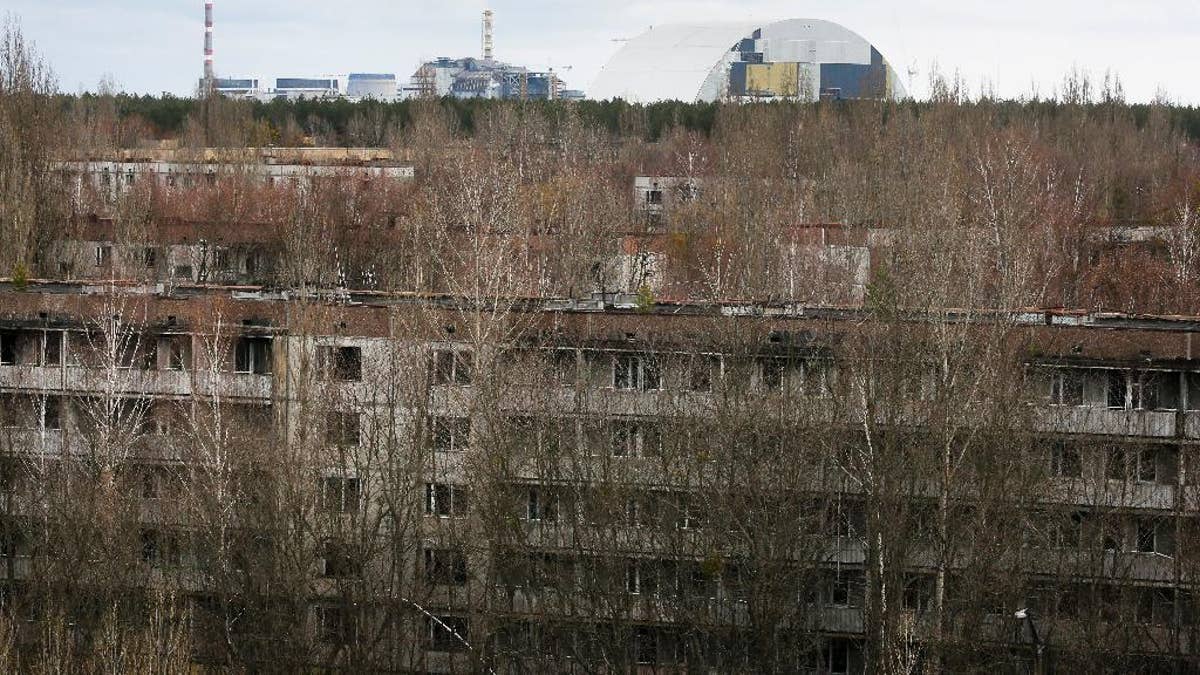
March 23, 2016: Abandoned apartment buildings in the town of Pripyat near Chernobyl, Ukraine. (The Associated Press)
Chernobyl could still be 'killing us' according to a new book which suggests the disaster may be responsible for the global rise in cancers and diseases.
MIT historian Kate Brown has been investigating the impact of radiation from the worst nuclear disaster in human history and thinks the real death toll has been covered up.
Brown alleges in her book that scientists and representatives of the United Nations, the Red Cross, and the World Health Organization hid evidence of hundreds of thousands of people who have died as a result of the 1986 nuclear explosion.
We have reached out to these institutions for comment and will update this story with any response.
At the time, it was widely agreed and underestimated by scientists that the accident would result in a total of 200 deaths over an 80 year time period.
Brown disputes this in her book when she writes: "International scientists suppressed evidence of a cancer epidemic among children."
According to Cancer Research UK, cancer rates and cancer risk overall are rising, but this is largely blamed on people living longer – as well as a move towards diets high in red and processed meats, increasing obesity in the west, and a culture of sunbathing and sunbeds.
This has led to the calculation that one in three people will get cancer recently being amended to "one in two people" being likely to develop the disease.
But Brown believes an increase in cancer rates may be linked to Chernobyl, and that governments and senior officials in the nuclear industry did not want to take responsibility or be investigated for other radiation incidents.
She also theorizes that academics who were not willing to cover up the facts were 'sidelined' because many influential scientists "had much larger radioactive skeletons in the closet from nuclear bomb tests".
She added: "Minimising both the number of deaths so far and the on-going health consequences of the Chernobyl disaster provided cover for nuclear powers to dodge lawsuits and uncomfortable investigations in the 1990s."
Brown has criticized a lot of senior figures, both past and present, for not admitting that nuclear radiation is really poisonous and therefore not providing adequate protection or support for people who may still be affected.
The book details how the threshold for the amount of radiation legally allowed in produce exported for consumption in the US is surprisingly high and could be dangerous.
It also vividly describes what the nuclear plant workers and local residents saw and experience when the explosion occurred.
One part reveals how workers who were told to clean up the nuclear waste were advised by Soviet doctors to drink vodka throughout the day because they claimed it would stimulate the liver and cleanse the body of radiation.
Brown conducted her research over four years and relied on 27 archives of information from Europe, the US and the former Soviet Union.
She estimates that the actual death toll could be as high as 150,000 for Ukraine alone over the past three decades.
The book ends with Brown calling for the impact of nuclear radiation on human health and the facts and figures surrounding Chernobyl to be reassessed.
This story originally appeared in The Sun.
